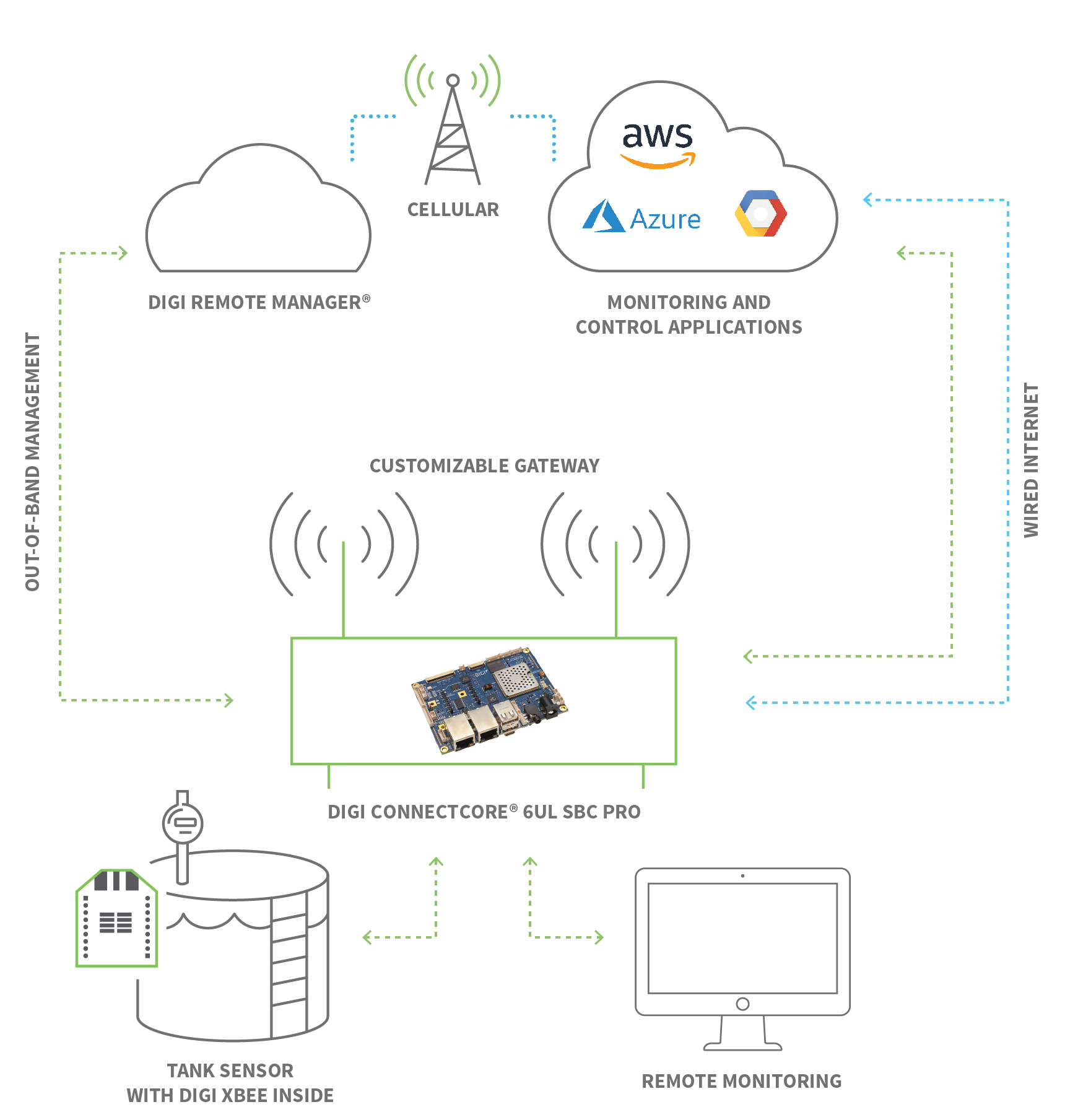SSH Connect IoT Device Example: Your Ultimate Guide To Secure Connections
Ever wondered how to securely connect your IoT devices using SSH? Well, you’re not alone. In today’s interconnected world, ensuring the security of your IoT devices is crucial, and SSH plays a vital role in achieving that. If you’re looking for practical examples and a deep dive into SSH for IoT devices, you’ve come to the right place. So, buckle up because we’re about to take you on a journey through the ins and outs of SSH connect IoT device examples.
Let’s face it—IoT devices are everywhere, from smart thermostats to industrial sensors. But with all these gadgets comes the challenge of keeping them secure. That’s where SSH comes in. It’s like the digital lock that keeps prying eyes away from your sensitive data. In this guide, we’ll break down everything you need to know about SSH and how it can protect your IoT devices.
Don’t worry if you’re new to this. We’ll keep things simple, engaging, and packed with actionable insights. Whether you’re a tech enthusiast or a seasoned pro, this article will help you master SSH connections for IoT devices. Ready to dive in? Let’s go!
- Bakari Sellers Ellen Rucker Love Marriage Family Life Revealed
- Nicole Shanahans Story From Brin To Politics Love Latest
Table of Contents
- What is SSH?
- Why Use SSH for IoT Devices?
- Basic SSH Setup for IoT Devices
- SSH Connect IoT Device Examples
- Security Best Practices for SSH
- Common Issues and Troubleshooting
- Advanced Features of SSH for IoT
- Performance Optimization Tips
- Real-World Applications of SSH in IoT
- Conclusion
What is SSH?
SSH, or Secure Shell, is like the superhero of secure connections. It’s a protocol designed to let you remotely access and manage devices over an encrypted connection. Think of it as a private tunnel that keeps your data safe from hackers and other digital threats. But why is it so important for IoT devices?
In the world of IoT, devices are often spread out across different locations. You might have a smart home setup where sensors are all over your house, or maybe you’re managing industrial equipment in remote areas. SSH ensures that you can securely connect to these devices without worrying about data breaches.
- Brown County Jail Arrest Records Find Information Mugshots In Green Bay
- California Paycheck Calculator Get Your Takehome Pay
Here’s the deal: SSH isn’t just about security. It also provides a reliable way to automate tasks, transfer files, and monitor device performance. So whether you’re troubleshooting a sensor or updating firmware, SSH has got your back.
How Does SSH Work?
SSH works by creating an encrypted connection between your computer (the client) and the IoT device (the server). When you connect, SSH authenticates both ends to ensure no one is impersonating either party. Then, it encrypts all communication so that even if someone intercepts your data, they won’t be able to make sense of it.
Here’s a quick breakdown of the SSH process:
- Connection Initiation: The client requests a connection to the server.
- Authentication: The server verifies the client’s identity, often through passwords or public key authentication.
- Encryption: Once authenticated, the connection is encrypted, ensuring secure communication.
- Data Transfer: You can now send commands, transfer files, or perform other tasks securely.
Why Use SSH for IoT Devices?
Now that you know what SSH is, let’s talk about why it’s a game-changer for IoT devices. First off, security is the name of the game. IoT devices are often targets for cyberattacks because they’re seen as weak points in a network. SSH helps mitigate this risk by providing a secure channel for communication.
But it’s not just about security. SSH also offers convenience and flexibility. You can manage multiple devices from a single location, automate routine tasks, and even monitor real-time data streams. This makes it a perfect fit for both personal and industrial IoT setups.
Here are some key reasons why SSH is ideal for IoT:
- Encryption: Protects your data from unauthorized access.
- Authentication: Ensures only authorized users can access your devices.
- Automation: Allows you to automate tasks like firmware updates and configuration changes.
- Remote Access: Lets you manage devices from anywhere in the world.
Basic SSH Setup for IoT Devices
Setting up SSH for your IoT devices isn’t as complicated as it sounds. Most modern IoT devices come with SSH support out of the box, but you’ll need to configure a few things to get started. Let’s walk through the basics.
Step 1: Enable SSH on Your IoT Device
First things first, you need to enable SSH on your IoT device. This usually involves accessing the device’s settings through a web interface or command-line interface. Look for an option like “Enable SSH” or “SSH Server.” Once enabled, note down the IP address of your device, as you’ll need it later.
Step 2: Install an SSH Client
Next, you’ll need an SSH client on your computer. If you’re using Linux or macOS, you’re in luck because SSH is built into the terminal. Windows users can download tools like PuTTY or use the Windows Subsystem for Linux (WSL). Once installed, you’re ready to connect.
Step 3: Connect to Your IoT Device
Now comes the fun part—connecting to your IoT device. Open your SSH client and enter the IP address of your device. You’ll also need to provide a username and password or use public key authentication for added security. Once connected, you’ll have full control over your device.
Tips for a Smooth Setup
Here are a few tips to make your SSH setup process smoother:
- Use Strong Passwords: Avoid using simple passwords that can be easily guessed.
- Enable Public Key Authentication: This adds an extra layer of security by requiring a key pair for access.
- Regularly Update Firmware: Keep your IoT devices up to date to protect against vulnerabilities.
SSH Connect IoT Device Examples
Let’s dive into some practical examples of how to use SSH to connect to IoT devices. These examples will cover different scenarios, from basic connections to more advanced setups. Ready to roll up your sleeves? Let’s get started.
Example 1: Connecting to a Raspberry Pi
The Raspberry Pi is one of the most popular IoT devices out there. Here’s how you can connect to it using SSH:
- Enable SSH on your Raspberry Pi by navigating to the settings menu.
- Find the IP address of your Raspberry Pi. You can usually do this by running the command
ifconfigor checking your router’s admin page. - Open your SSH client and enter the command
ssh pi@. - Enter the default password (usually “raspberry”) or use public key authentication for added security.
Example 2: Connecting to a Smart Thermostat
Smart thermostats are another common IoT device. While not all thermostats support SSH, many high-end models do. Here’s how you can connect:
- Check your thermostat’s manual to see if SSH is supported.
- If supported, enable SSH in the settings menu.
- Connect to your thermostat using the IP address and login credentials provided in the manual.
Example 3: Managing an Industrial Sensor
Industrial sensors often require remote management, and SSH is the perfect tool for the job. Here’s an example:
- Access the sensor’s web interface and enable SSH.
- Connect using your SSH client and the sensor’s IP address.
- Run commands to monitor sensor data, update firmware, or configure settings.
Security Best Practices for SSH
Now that you know how to set up and connect to IoT devices using SSH, let’s talk about security. While SSH is inherently secure, there are still steps you can take to make it even more robust.
1. Use Strong Authentication Methods
Passwords are okay, but public key authentication is much stronger. By using a key pair, you eliminate the risk of brute-force attacks and make it harder for unauthorized users to gain access.
2. Limit Access to Specific IPs
If you only need to access your IoT devices from specific locations, consider limiting SSH access to those IPs. This adds another layer of protection by blocking connections from unknown sources.
3. Regularly Update Your Devices
IoT devices, like any other technology, are susceptible to vulnerabilities. Keep your firmware and software up to date to patch any security holes.
Advanced Security Measures
For those who want to take security to the next level, here are some advanced measures:
- Disable Root Login: Restricting root access reduces the risk of unauthorized administrative changes.
- Use Port Forwarding: Instead of using the default SSH port (22), change it to a non-standard port to deter attackers.
- Implement Firewall Rules: Configure your firewall to block unnecessary traffic and only allow SSH connections.
Common Issues and Troubleshooting
Even the best-laid plans can go awry, and SSH is no exception. Here are some common issues you might encounter when connecting to IoT devices via SSH, along with solutions to help you troubleshoot.
Issue 1: Connection Refused
Symptoms: You try to connect to your IoT device, but you get a “Connection Refused” error.
Solution: Double-check that SSH is enabled on your device and that the IP address and port number are correct. Also, ensure that your firewall isn’t blocking SSH traffic.
Issue 2: Authentication Failed
Symptoms: You enter your credentials, but the system rejects them.
Solution: Verify that you’re using the correct username and password. If you’re using public key authentication, make sure your key is properly configured on the device.
Issue 3: Slow Connection
Symptoms: Your SSH connection is painfully slow.
Solution: Check your network settings and ensure there are no bottlenecks. You might also want to optimize your SSH configuration for better performance.
Advanced Features of SSH for IoT
Once you’ve mastered the basics, it’s time to explore some advanced features of SSH that can take your IoT setup to the next level. From tunneling to automation, SSH offers a wealth of possibilities.
1. SSH Tunneling
SSH tunneling allows you to securely transfer data between devices. This is especially useful if you need to access sensitive information or transfer files over an unsecured network.
2. Automated Tasks
With SSH, you can automate routine tasks like firmware updates, configuration changes, and data backups. This saves time and reduces the risk of human error.
3. Remote Monitoring
SSH lets you monitor your IoT devices in real-time, giving you insights into their performance and helping you identify potential issues before they become major problems.
Performance Optimization Tips
While SSH is secure, it can sometimes be slow, especially if you’re managing multiple devices. Here are some tips to optimize performance:
- Use Compression: Enable compression in your SSH configuration to speed up data transfer.
- Limit Connections: Restrict the number of simultaneous SSH sessions to prevent overload.
- Upgrade Hardware: If possible, upgrade your IoT devices to models with better
- Owls In Illinois Species Identification Where To Spot Them
- Drakes Viral Video What Happened How He Reacted Latest News

Secure Remote Access Best SSH Solutions For IoT Devices

How To SSH Connect IoT Device On Windows 10 A Comprehensive Guide

Secure IoT Access Remote Raspberry Pi & SSH Guide